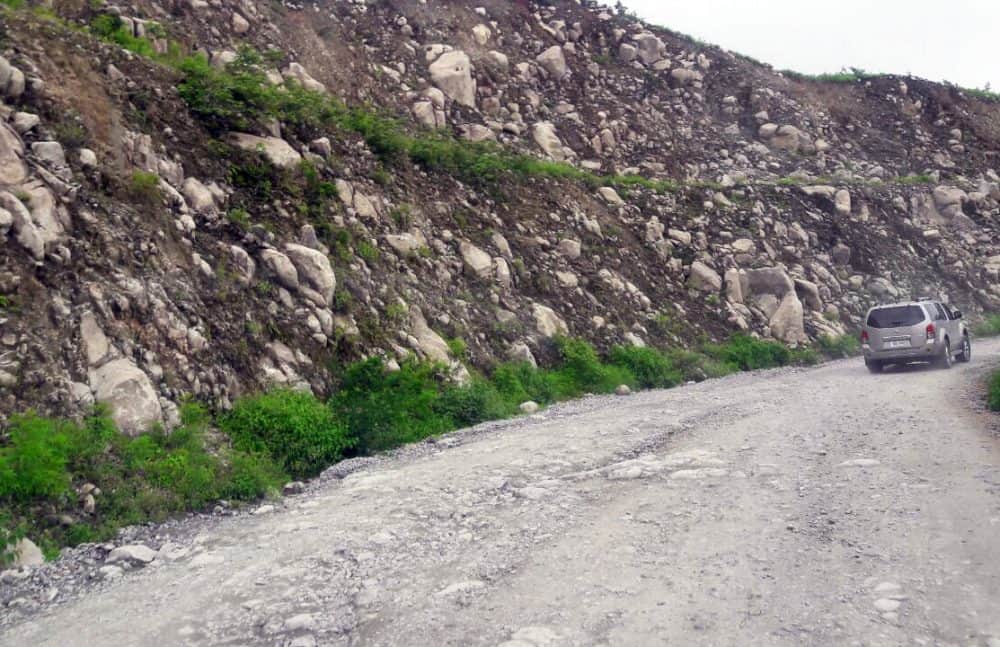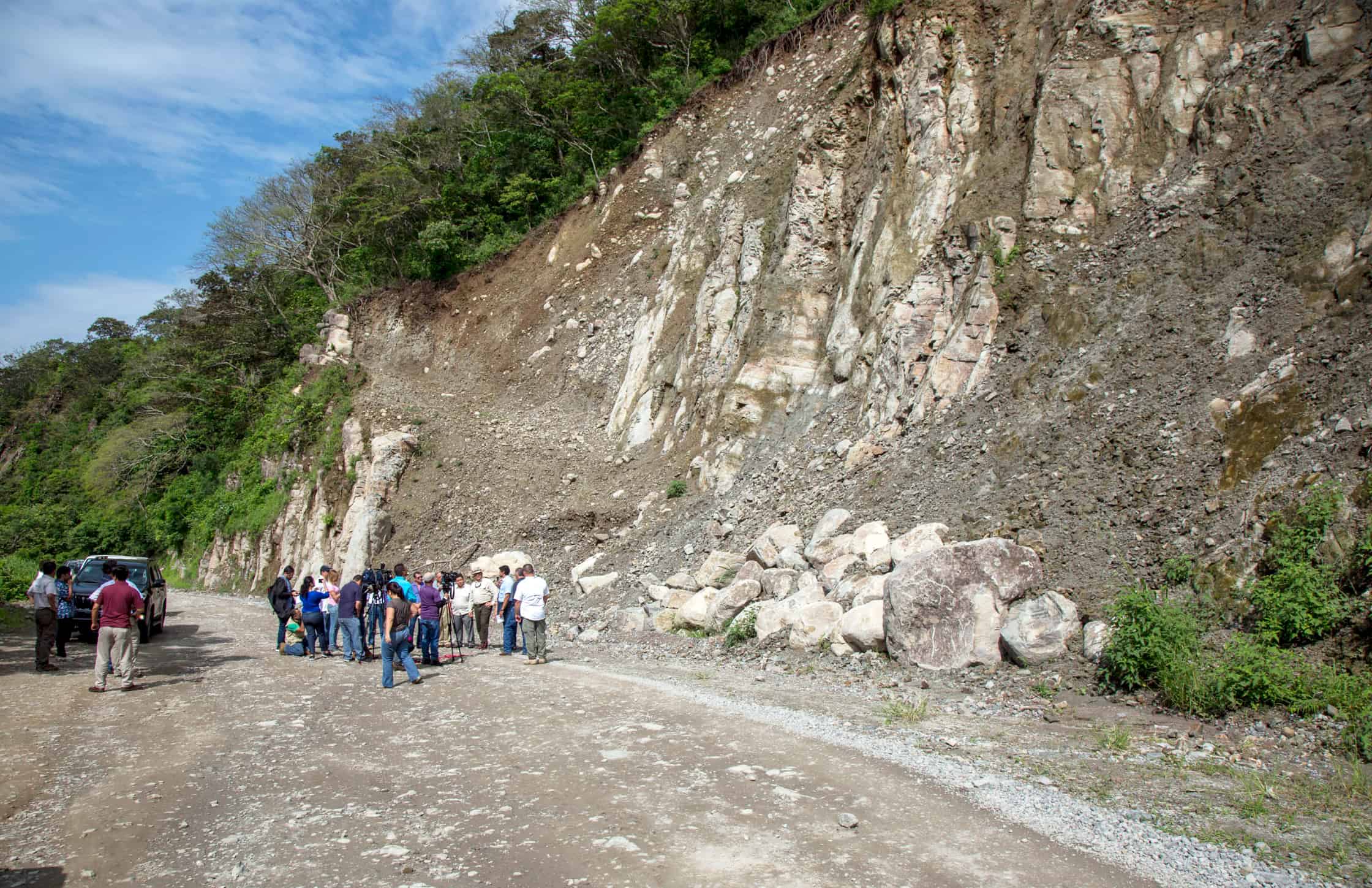The long-awaited project to build an asphalt road to replace the current gravel road to Monteverde will begin today, President Luis Guillermo Solís confirmed during an inspection of the area late last week.
The 17.5-kilometer stretch of Route 606 between Guacimal and Santa Elena in the Pacific province of Puntarenas will require an investment of ₡6.2 billion ($10.8 million) from the National Roadway Council (CONAVI).
The project is slated for completion in September 2018, the president said on Friday, meaning that Costa Rica’s next president will inaugurate the road. (Solís’ term ends in May 2018.)
Solís told a group of local residents at a public event that the government already has the funds to finance the works.
“We just ask you to have a little patience,” he said.
The project
CONAVI Director Germán Valverde said that during the first stage of the project, teams will work on stabilization and protection measures at 23 key points with steep slopes along the route. These conditions frequently cause landslides that completely block passage along the bumpy road.
One of these key points is located near a geotechnical fault activated during the Sámara earthquake of September 5, 2012.
The contractor, Grupo Orosi, will spend the first three months solving all stabilization problems. The road becomes particularly difficult to transit during the rainy season months, between May and November; therefore, work during these initial months will also include repairs on the current gravel road to facilitate rainy-season vehicle passage, Valverde said.
The project also includes the construction of ditches and guardrails.
“Paving works will likely start in September,” he said.
The gravel road to Monteverde has long been narrow and difficult to transit. Opinions about improving the road have been mixed in the community, originally founded by Quakers in the 1950s. Some tourism leaders in the community are eager for the road because it could significantly increase the number of visitors; others are concerned about the change for precisely the same reason.
Read also: To pave or not to pave? Monteverde’s ongoing roadway saga
The area’s habitats also require careful handling. Route 606 crosses biologically sensitive areas like the Pájaro Campana Biological Corridor, which connects the Monteverde Cloud Forest with mangrove forests along the Pacific coast.
“The connectivity between these very different environments is of great importance for the preservation of several species,” an evaluation of the project stated in 2015.
To avoid this segregation of habitats, original plans recommended the construction of hanging ropes and tunnels to allow animals to pass, as well as signs warning drivers to watch for animals crossing the road.
Valverde said the project will include three underground wildlife crossings, as well as all required vertical and horizontal signals along the road.

Tourism industry
Monteverde residents largely rely on tourism businesses and have been waiting for improvements on the road for more than twenty years.
The area’s most prominent landmark is the Monteverde Cloud Forest Reserve — 10,500 hectares of tropical rain and cloud forests. The reserve receives some 75,000 tourists a year, including scientists and investigators from many countries attracted by its rich biodiversity.
Business owners claim they have seen a significant decrease in revenue, prompt by a significant drop in tourist visits because of poor road conditions. Business leaders say this situation forced several hotels, restaurants and other businesses to close in recent years.






